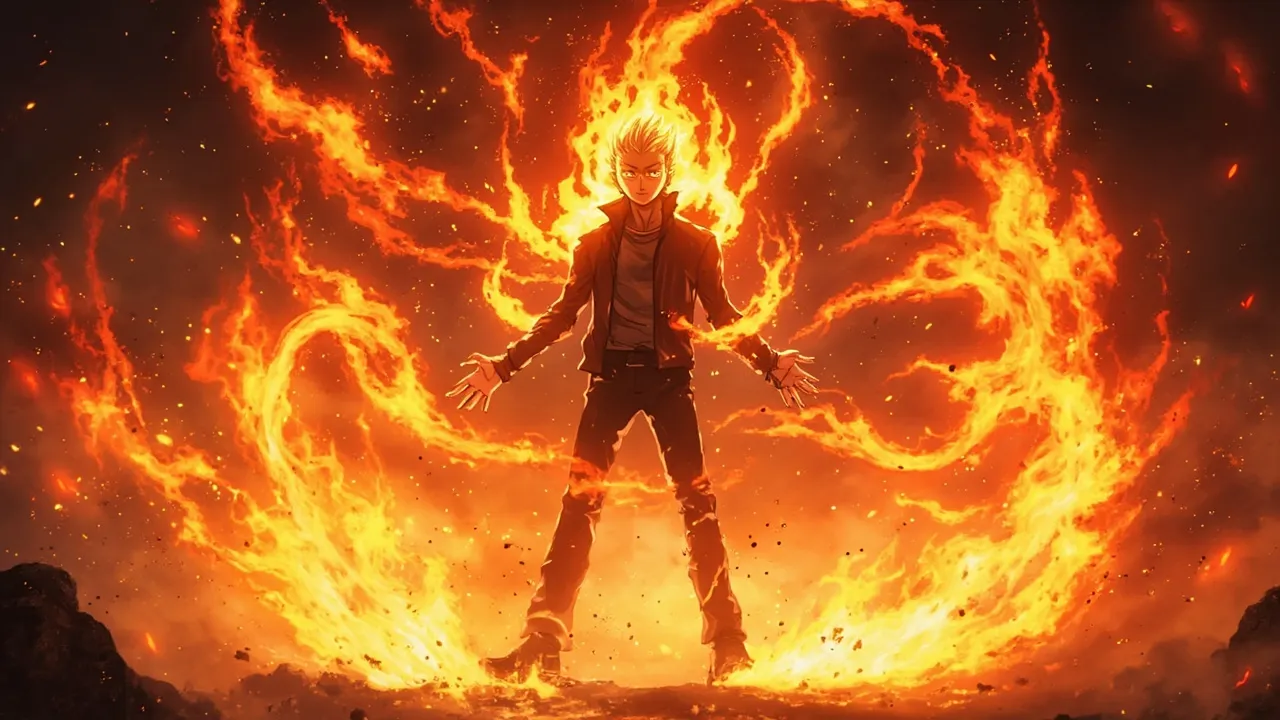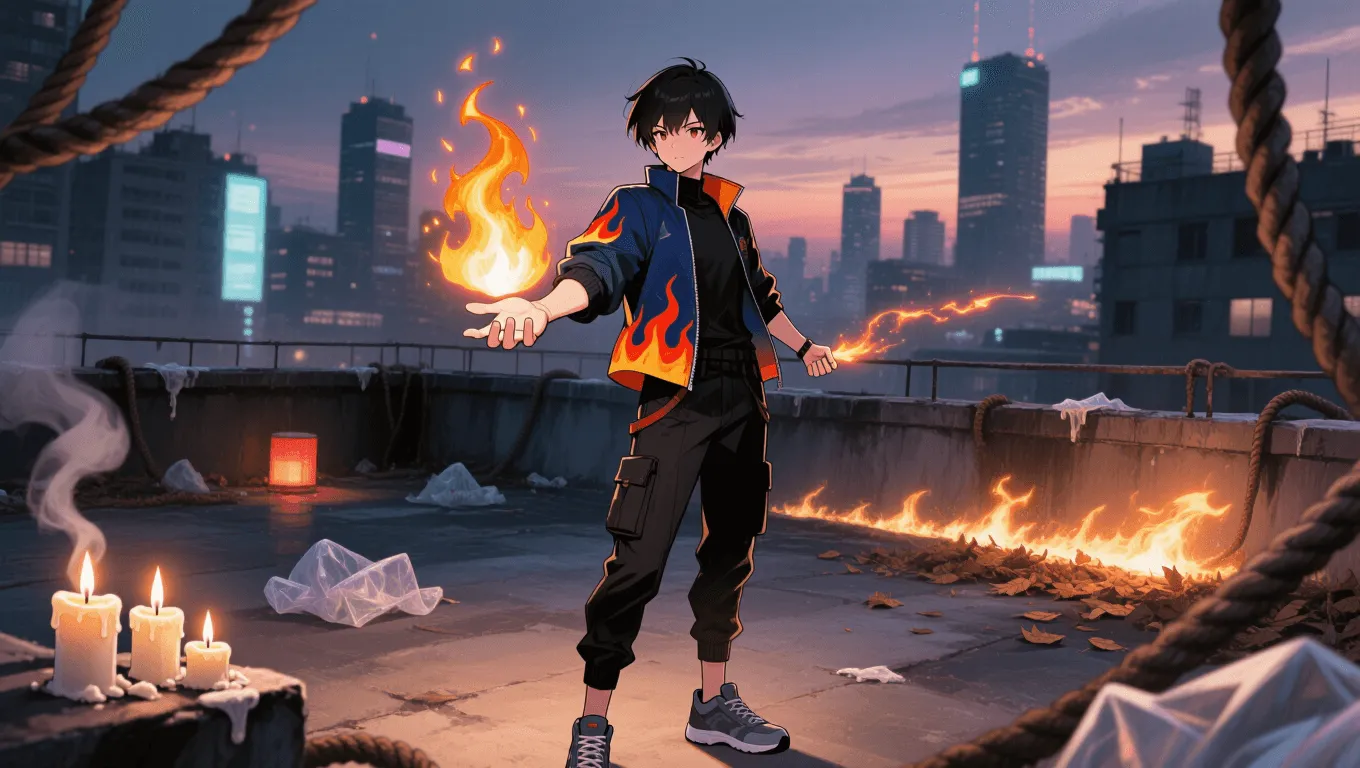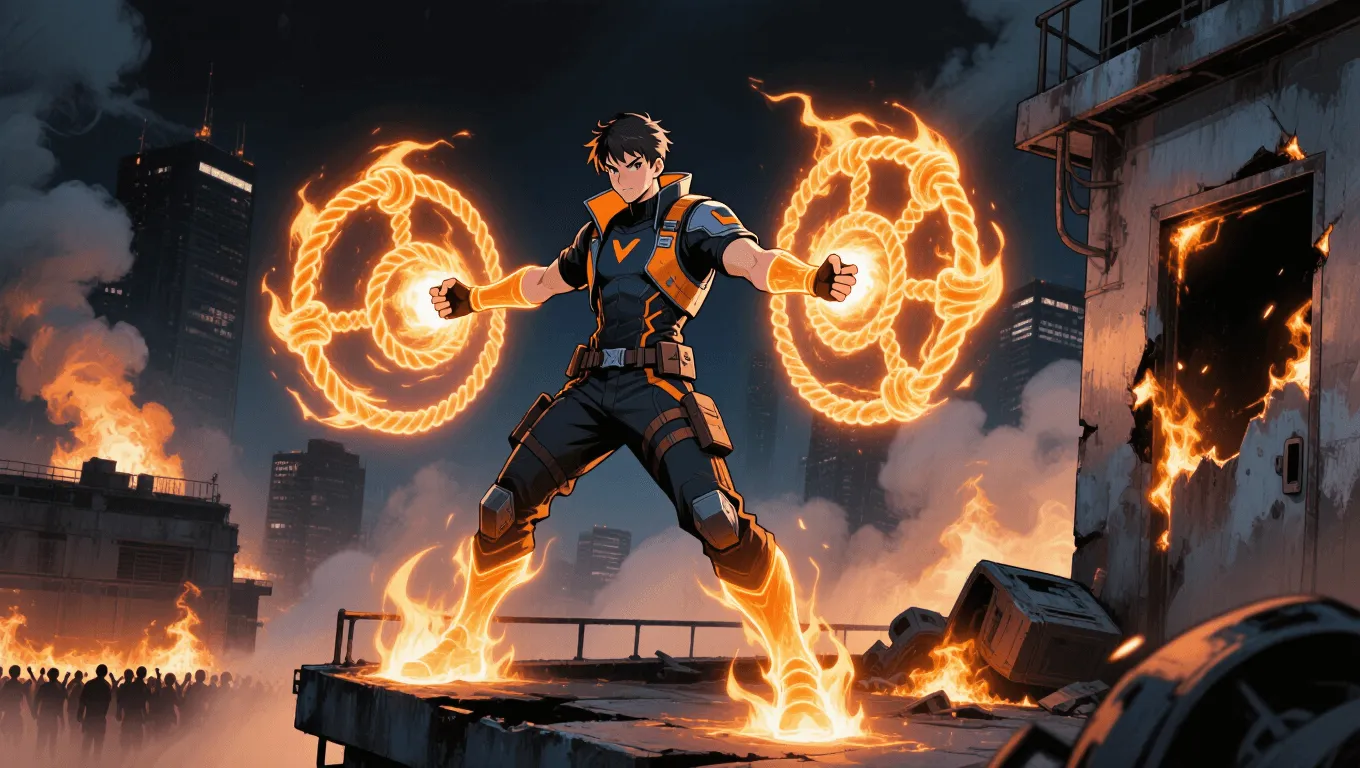Fire Manipulation | Pyrokinesis

Fire Manipulation | Pyrokinesis Video Demo 🎬
Table of Contents
- Fire Manipulation | Pyrokinesis Video Demo 🎬
- What Is Fire Manipulation | Pyrokinesis
- Core Abilities of Fire Manipulation | Pyrokinesis
- Application / Tactical Advantages in Combat
- Level: Level 1 🏙️, Level 2 🌇, Level 3 🌃
- Limitations of Using the Fire Manipulation | Pyrokinesis
- Weakness Against What Other Superpowers
- Synergistic Power Combos
- Known Users
Fire Manipulation | Pyrokinesis is the power to create, control, and transform fire through focused will. Users shape flames, trigger ignition without fuel, and bend heat like a sculptor moves clay. In many stories, pyrokinesis also extends to managing combustion, channeling thermal energy, and even flirting with plasma-level temperatures. This guide explains what the power is, how it works in action, its limitations and weaknesses, and how it synergizes with allied abilities. For more powers, browse the growing superpower wiki or try a random pick with the random superpower generator.
What Is Fire Manipulation | Pyrokinesis
At its core, Fire Manipulation (often called pyrokinesis, flame control, or pyrogenesis) lets the user influence the behavior of fire and heat. Depending on the setting, that influence ranges from simple flame projection to complex control of exothermic reactions. Some users can conjure fire from nothing; others must draw it from existing sources—sparks, candles, electrical arcs, or even friction.
Key concepts:
-
Ignition vs. amplification: Ignition is starting a flame; amplification is feeding or enlarging it by pulling in oxygen, fuel, or heat.
-
Heat vs. flame: Heat is energy; flame is heat plus fuel and oxidizer. Skilled pyrokinetics manage “bare heat” for non-flaming effects like warming air, softening metal, or creating thermal lenses.
-
Combustion dynamics: Understanding flash point, backdrafts, and wildfire spread patterns makes power use safer and more precise.
-
Energy budgets: Fire doesn’t appear from nowhere. Even when it seems “summoned,” many settings treat it as conversion from internal caloric reserves or ambient thermal energy.
Core Abilities of Fire Manipulation | Pyrokinesis
Flame Generation
Create fire from a spark or from nothing. Beginners produce palm-sized flames; advanced users emit sustained streams or concentrated fireballs. Some can step into plasma manipulation territory, raising heat beyond visible flame to star-white jets.
Flame Control and Shaping
Guide flames like ribbons, whips, or rings. This includes building fire constructs—walls, spears, nets—or forming protective incendiary auras that deter close attackers. Fine control enables “cool flames” for safe illumination or “hot spots” for cutting.
Thermal Manipulation
Raise or lower temperatures without visible flame. Applications include thawing ice, superheating liquids, or creating thermal gradients to distort vision (heat haze). With practice, users gain limited thermal vision, sensing heat signatures through walls or smoke.
Combustion Steering
Influence what burns and how fast. This ranges from accelerating ignition to snuffing flames by removing one side of the fire triangle (heat, fuel, or oxygen). At higher mastery, users can prevent backdrafts, redirect a wildfire’s path, or induce flash ignition in targeted zones.
Propulsion and Mobility
Blast jets for short hops, boosted jumps, or limited flight. The user vents fire backward for thrust, cushion landings with heat cushions, and dash through the air in bursts.
Heat Resistance
A robust form of pyrokinetic durability that prevents burns and heatstroke. Top-tier users can stand inside infernos or walk across molten metal momentarily. Heat resistance differs from full lava/magma immunity—contact with superheated rock still risks blunt-force and suffocation hazards.
Energy Conversion and Storage (Advanced)
Some settings allow users to “bank” heat, absorbing ambient warmth or flame to power later attacks, or to quench fires by converting thermal energy into light or motion.
Application / Tactical Advantages in Combat
-
Area Denial: Create burning perimeters or heat mirages to funnel enemies. Flame whips keep melee threats at bay.
-
Precision Strikes: Needle-thin jets cut ropes, weld doors, or target weapon mechanisms without hurting bystanders. A quick thermal spike disables ammunition or melts locks.
-
Visibility Control: Smoke and heat shimmer obscure sightlines; glowing embers light up dark arenas while keeping hands free.
-
Counter-Projectile: Vaporize incoming arrows, freeze less stable explosives by depriving ignition, or envelop bullets in heat waves to deform them midair (requires extreme temperatures and timing).
-
Environmental Leverage: Turn kitchens, fuel depots, and power plants into resource-rich battlefields. Even barren areas yield friction-spark options if the user can accelerate air molecules.
-
Psychological Impact: Fire’s primal fear factor deters aggression and forces retreats without lasting harm when used carefully.
Level: Level 1 🏙️, Level 2 🌇, Level 3 🌃
Level 1 🏙️ — Ember Adept
-
Profile: New or cautious users.
-
Capabilities: Spark ignition from short range; palm-sized flames; basic fireballs; light heat resistance (no blistering in moderate flames). Can snuff candles at a distance and warm objects gradually.
-
Tactics: Scare off attackers, create emergency beacons, and perform simple rescues by burning through cords or soft plastics. Limited area control—short-lived fire lines on flammable surfaces.
-
Training Focus: Safety protocols, reading wind and fuel sources, and learning to shut down accidental spread.

Level 2 🌇 — Flame Sculptor
-
Profile: Trained operative with field experience.
-
Capabilities: Mid-range flame projection; reliable fire constructs (walls, ropes, shields); directional heat waves; brief boosts and jumps via flame jets; moderate thermal vision in smoky conditions. Can prevent backdrafts and manage building fires for egress paths.
-
Tactics: Crowd control with fire curtains, precision “surgical” heating (cutting metal, disabling machinery), and nonlethal deterrence through heat fields set below ignition temperature.
-
Training Focus: Combustion chemistry, airflow manipulation, and stamina management to prevent burnout.

Level 3 🌃 — Inferno Architect
-
Profile: Elite controller at near-plasma temperatures.
-
Capabilities: City-block scale influence in open areas; sustained flight via high-thrust jets; rapid temperature cycling; vacuum-sealed flame via oxygen manipulation (if secondary control is present) or pure heat beams. Can absorb external fires to recharge.
-
Tactics: Strategic wildfire steering away from populations, battlefield terraforming (glassifying sand into barriers), and precision anti-artillery heat lances. Capable of “cold shutdowns” by draining heat from fires and re-radiating it safely.
-
Training Focus: Ethical rules of engagement, rescue coordination, and long-duration energy budgets to avoid collateral ignition.

Limitations of Using the Fire Manipulation | Pyrokinesis
-
Fuel and Oxygen Dependence: Traditional flame needs fuel and an oxidizer. In low-oxygen environments, projection drops unless the user manipulates pure heat or carries oxidizers.
-
Collateral Risk: Sparks travel. Wildfire conditions (dry brush, high winds) can escalate a small skirmish into a disaster. Responsible users learn containment first.
-
Energy Drain and Overheating: Internal body temperature may spike with extended output. Without cooldown intervals, users risk dehydration, heat exhaustion, or blackout.
-
Conductive Hazards: Superheating metals conducts heat into structures, causing buckling or toxic off-gassing. Rescues require ventilation knowledge.
-
Visibility and Detection: Large flames and heat signatures are conspicuous to sensors and drones. Stealth use is limited—heat trails linger.
-
Material Limits: Some materials (ceramics, ablatives, advanced composites) resist heat. Fire is poor against sealed, heat-shielded targets unless temperatures reach extreme levels.
-
Ethical and Legal Constraints: Many jurisdictions treat pyrokinesis like hazardous equipment. Licensed rescue work and strict escalation policies are common in-world.
Weakness Against What Other Superpowers
-
Water Manipulation / Hydrokinetics: Water cools and smothers flames, while steam feedback can blind the user. Skilled hydrokinetics flood oxygen, halting combustion.
-
Cryokinesis / Ice Manipulation: Rapid heat draw neutralizes ignition and can induce thermal shock in fire constructs, cracking them apart.
-
Vacuum Generation / Air Deprivation: Removing oxygen collapses open flames instantly, forcing a shift to pure thermal beams the user may not possess.
-
Earth / Sand Control: Abrasive barriers and fire breaks starve fires of fuel, while earthen bunkers shrug off radiant heat for longer.
-
Energy Absorption: Heat-draining powers siphon thermal energy, leaving the pyrokinetic underpowered and potentially chilled.
-
Light Manipulation (Reflective Shields): High-albedo barriers and photonic mirrors redirect radiant heat away, reducing effectiveness at range.
Synergistic Power Combos
-
Aerokinesis (Wind Control): Shape oxygen-rich jets for hotter, cleaner flames; bend smoke away from allies; create vented corridors that act as thermal lanes for precision shots.
-
Geomancy / Metal Manipulation: Forge instant kilns, seal breaches with fused glass, or heat-treat weapons on the fly. Metal bending plus heat equals battlefield fabrication.
-
Electrokinesis: Arc ignition through wet or resistant materials, prime combustion at a distance, or combine lightning and flame for plasma surges.
-
Telekinesis: Hold fuel sources in stable patterns—rotating rings, hovering shields—and move burning debris safely during rescue.
-
Hydrokinesis (Advanced Teamwork): Counterintuitive but powerful—steam control, pressure-jet cutting, and self-quenching tactics allow high-heat operations with minimal collateral.
-
Force Fields / Barriers: Encapsulate blasts to prevent spread, create thermal cells that concentrate heat for rapid metalworking or nonlethal crowd control.
-
Healing / Bio-Regulation: Mitigate heat stress and dehydration, enabling longer sustained output without harming the user’s body.
Known Users
-
Human Torch (Johnny Storm): A classic comic example of flight via jet propulsion, nova bursts, and controlled flame forms. See Johnny Storm for canonical feats and limitations.
-
Roy Mustang: A tactical pyrokinetic famed for snap-ignition and oxygen control to produce precise explosions. Learn more about Roy Mustang.
-
Zuko: A disciplined practitioner whose style emphasizes breath, posture, and redirection, illustrating that technique matters as much as raw heat. Explore Zuko.
-
Dabi: Notable for extreme blue flames and limited self-protection, highlighting the cost of insufficient heat resistance. Read about Dabi.
These characters showcase varied interpretations of pyrokinesis—ranging from elegant precision to city-scale infernos—and underline the importance of training, safety, and teamwork. For deeper dives into related abilities and new combinations, explore the superpower wiki or roll a surprise ability with the random superpower generator.
